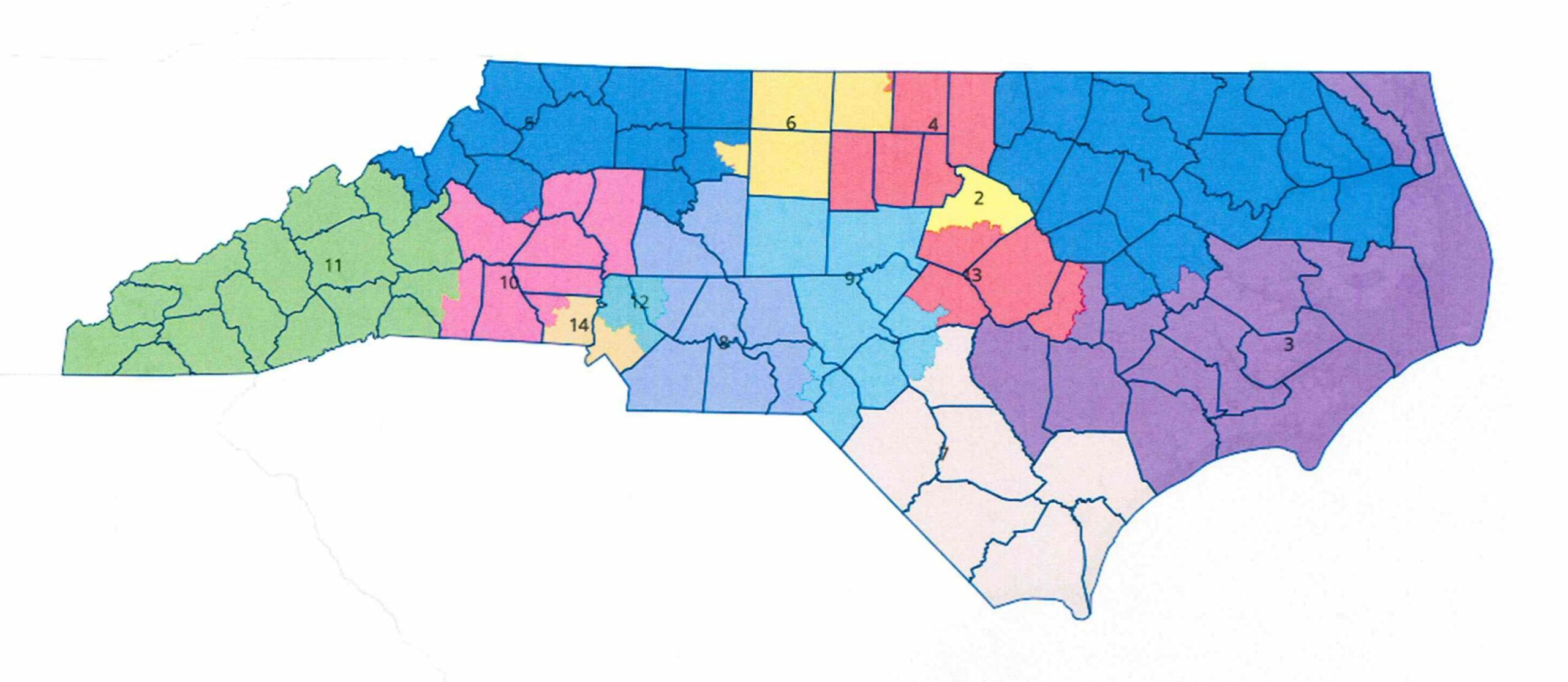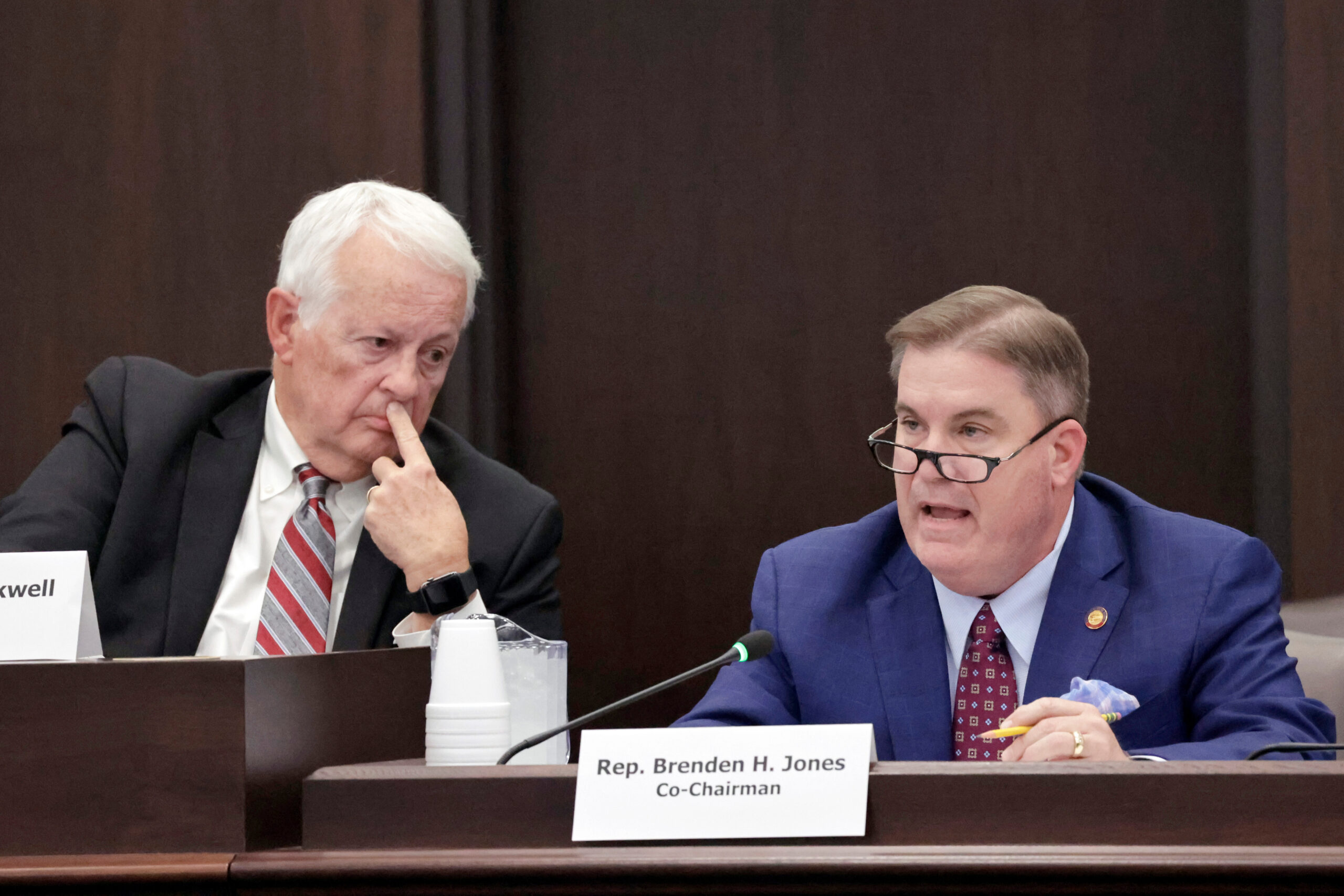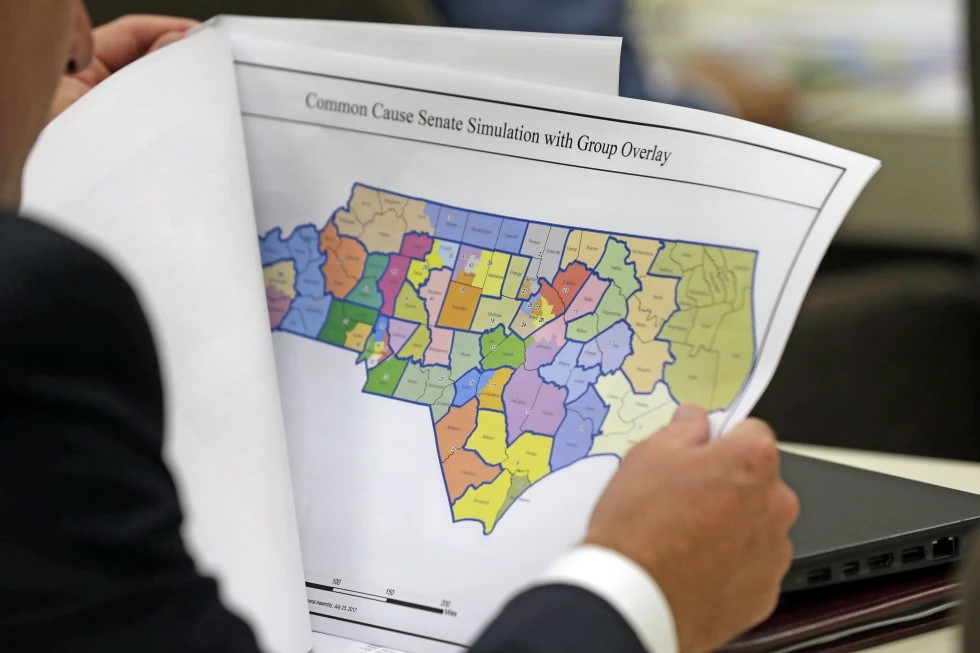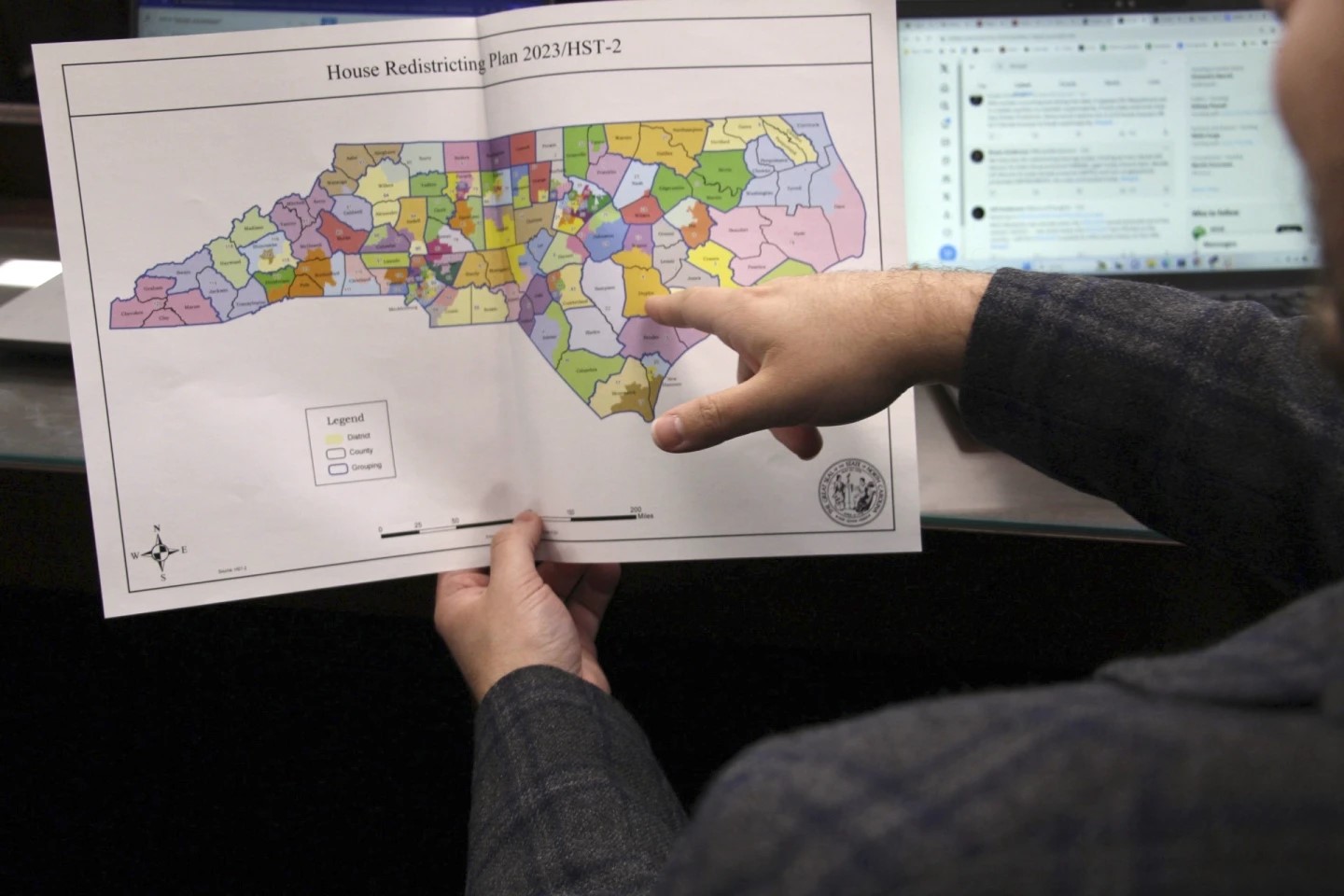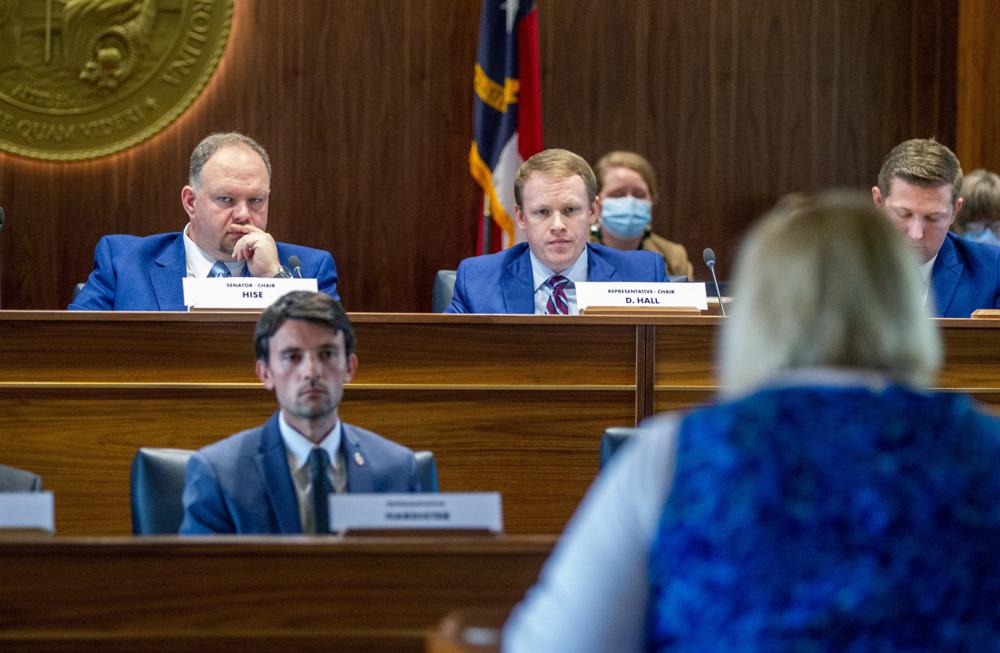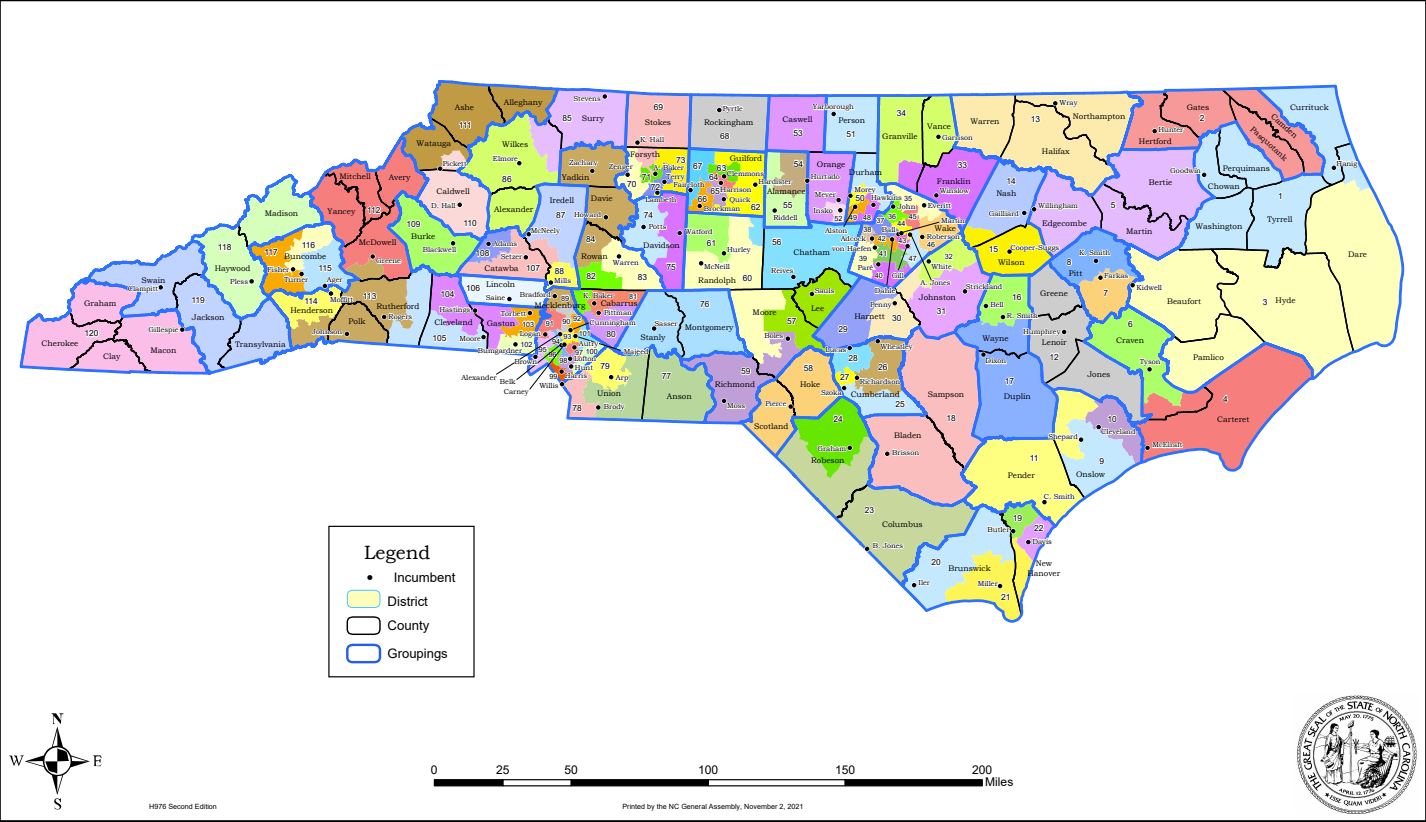
Written by GARY D. ROBERTSON
North Carolina Republicans on Wednesday neared final passage of their congressional and legislative redistricting for the next decade, dismissing Democratic arguments that the boundaries are unlawful as overly partisan toward the GOP and wrongly ignore race. The courthouse soon will be the only place that map opponents can seek redress.
On a party-line vote, the full Senate voted for a GOP-drawn map for its 50 districts. Later, a Senate committee approved a map for the House’s 120 legislative districts that the House voted for on Tuesday. The House Redistricting Committee also voted on the Senate map approved earlier in the day and the Senate-backed plan to draw district lines for North Carolina’s 14 U.S. House seats.
Final votes on all three maps are expected on Thursday. Democratic Gov. Roy Cooper’s veto doesn’t apply to redistricting maps, all of which are expected to favor Republican political fortunes beginning with 2022.
Democrats and outside analysis project that the plans would help the GOP extend their state Senate and House majorities, and give Republican candidates the ability to win at least 10 of the 14 U.S. House seats. Currently Republicans hold an 8-5 U.S. House seat advantage. North Carolina is getting a 14th seat due to population gains. The Republican congressional plan would break up the current district of first-term Democratic Rep. Kathy Manning of Greensboro into four GOP-leaning districts.
Scores of speakers at public hearings had asked mapmakers, without success, to draw boundaries that more closely reflect North Carolina’s status as a narrowly divided state. Races for governor, president and U.S. Senate have been very close in recent years.
“The circumstantial evidence, once the maps have been created, clearly show that there’s still partisan gerrymandering,” Sen. Jay Chaudhuri, a Wake County Democrat, said after the vote on the Senate map.
Republican legislators have been careful not to quantify how many legislative and congressional districts they’d be favored to win under the plans, citing repeatedly their decision to prohibit the use of partisan data like election results to inform how to sketch the maps.
Still, “I am confident that with any map our message is Republicans are strong enough to gain majorities in the General Assembly, but that has no connection” to reviewing any political data, said Sen. Ralph Hise, a Mitchell County Republican and Senate Redistricting Committee co-chairman. “I’m confident that … a fair and just court will uphold these maps.”
Senate Republicans used parliamentary maneuvers to deny votes on eight amendments by Democrats, who said they were trying to address illegal racial or partisan gerrymanders in certain regions, including Mecklenburg, Wake and several northeastern counties.
Authors of the amendments, some of which were already voted on Tuesday in a committee, said the changes would have fixed problems addressed in previous state court rulings. One ruling from the 2000s emphasized compliance with the federal Voting Rights Act to ensure Black voting power is not diluted, while the other from 2019 declared districts could violate the state constitution when they favor extremely one party over another.
Democrats and their allies say these and other failures are setting the General Assembly up for additional rounds of costly redistricting litigation, like what occurred during the 2010s, when legislative and congressional boundaries had to be redrawn on racial and partisan grounds.
The state NAACP, Common Cause and four voters already sued in state court last week, challenging the Republican refusal to consider race-based data in drawing districts. The plaintiffs said the analysis needed to ensure historically African American areas don’t see Black voters lose their ability to elect their preferred candidates. Republicans have said there’s no evidence of racially polarized voting presented to justify drawing those districts.
“When you have a history of drawing racially gerrymandered, unconstitutional districts, you might want to make sure if you’re doing it again,” Melissa Price Kromm with North Carolina Voters for Clean Elections said at a news conference in which several advocacy groups criticized the redistricting process. “But clearly, the current legislative leadership is allergic to good faith or even following the law.”
The proposed Senate map would mean several pairs of sitting senators would be living in the same district, meaning they may have to run against each other in order to return to the chamber in 2023.
Three pairs — composed of six Republicans — are in rural or mountain areas whose populations have failed to keep up with the growing Piedmont. Another pair places Republican Sen. Vickie Sawyer of Iredell County and Democratic Sen. Natasha Marcus of Mecklenburg County in the same Republican-leaning district.
Photo via the North Carolina General Assembly.

